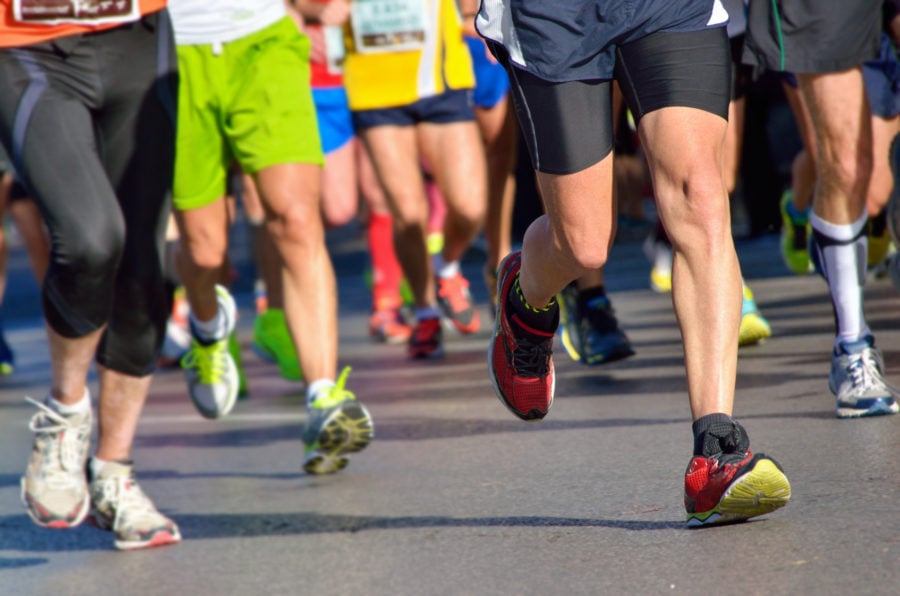The following story is excerpted from TIME’s special edition, The Science of Exercise, which is available at Amazon.
There’s no denying that running is one of the most democratic ways to work out. You can do it anytime, anywhere, and all you need is a good pair of running shoes and some stamina. It’s no wonder, then, that more and more Americans are adopting the sport and doing it competitively; the number of people who finished organized races grew 300% in the U.S. from 1990 to 2013, and in 2015, there were slightly more than 17 million Americans who ran in races nationwide.
Still, estimates suggest that 79% of runners will get injured at some point, a statistic that’s remained relatively stable for more than 40 years. “Running is hard on the wheels, especially if you’re doing long-distance running,” says James O’Keefe, a cardiologist at St. Luke’s Mid America Heart Institute in Kansas City and a former runner. “A lot of people will break down orthopedically.”
Running may prevent some injuries
Running has a reputation for causing wear and tear, but new research suggests that it may actually prevent injuries rather than increase the risk of them.
A small study published in December 2016 found that 30 minutes of running lowered inflammation in runners’ knee joints. In the report, researchers at Brigham Young University brought 15 healthy runners into a lab where samples of their blood and knee-joint fluid were taken before and after they ran for 30 minutes. The researchers then compared the samples with ones taken earlier when the men and women were sedentary.
The researchers expected to find an increase in molecules that spur inflammation, but they didn’t. Instead, they found that pro-inflammatory markers had decreased. “It was surprising,” says study author Matt Seeley, an associate professor of exercise science at BYU.
Seeley emphasizes that the report is a pilot and that his team plans to do the same study with more people in the near future. “I think, and hope, the data will show that running is good for your joints,” he adds. “Although the results are limited, they are also unexpected and could be important.”
Not everyone is convinced. “There is data on both sides of the fence,” says Brian Feeley, an orthopedic surgeon at the University of California, San Francisco, who wasn’t involved with the study. “We know there are some people who run all the time with no problems and others that have arthritis at a relatively young age.” For now, people of all abilities should allow themselves time to recover post-workout.

It may not be great for women’s bodies
Women make up about 57% of race finishers, and data suggests that the number of female runners is up worldwide. But men and women tend to run in different ways, and in some cases, that can mean more injuries for women.
Stephen Messier, director of the J.B. Snow Biomechanics Laboratory at Wake Forest University, is trying to understand why female runners get injured more often than men. So far he’s found that women tend to have higher arches and point their toes out more as they run. “We don’t know if those differences attribute to a greater risk for injury,” says Messier, but his team is trying to find out.
Prior research has found that female runners are more likely to be heel strikers, which some experts think increases risk of injury because of higher-impact landings. The way people’s hips and knees are naturally aligned may also increase their risk. Women also tend to have less strength in their core and hips, which could affect them.
That shouldn’t deter women from running, however. Women have more body fat, which is beneficial for energy storage and endurance, and they’re typically more flexible than men, which can benefit their muscles. Women also appear to be better at pacing themselves during races compared with men.
To prevent heel striking, experts suggest that people try landing closer to their midfoot or landing softer during each stride. Messier is also launching a trial that puts female runners through strength-training exercises to see if some bulking up can help them lower their injury risk overall.
You can run even in old age—to a point
As the popularity of competitive running increases, more people are doing it later in life, too. “Generations before us weren’t doing this,” says O’Keefe. “People weren’t running over 10 miles a day into their 60s.”
Today, people age 40 and up make up nearly 50% of marathon finishers in the U.S., whereas in 1980, they made up just 26%. O’Keefe says there is no definite age cutoff at which running is no longer good for you, but curbing it with age may be a good idea. “Many people find that their joints feel better if they do brisk walking rather than running after age 45 or 50,” he says. “I do advise people over age 45 to avoid chronic very-high-intensity long-distance running, as the body is not as resilient as we get older.”
One study looked at marathon runners and their non-runner spouses and found that the runners were thinner and had lower blood pressure and heart rate. But the findings also showed that the older racers had a lot of plaque in their arteries and scored higher on a measurement of heart-attack risk.
Other types of exercise, like high-intensity interval training and strength-based exercises, are good to mix in as you age. Pilates and yoga have also been shown to improve flexibility and balance, which are important for runners—and in aging. “If people tell me they are running 25 miles a week, I ask: Why are you doing it?” says O’Keefe. “If it’s to relax, be social or for long-term health, I tell them you’re better off running a mile and a half and then going to a yoga class. Concentrating on one thing can hurt in the long run.”
